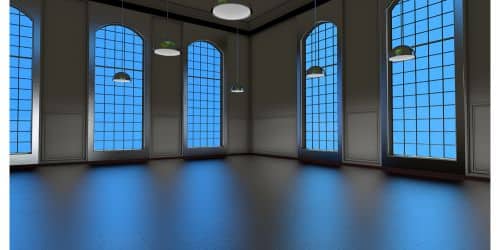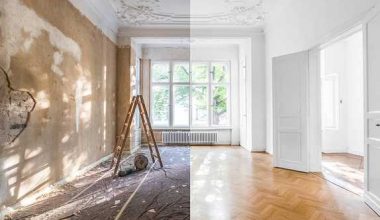The number of physical retail locations is increasing. Retail and food sales in-store rose by 11.5% in the first quarter of 2023. March had somewhat lower footfall in retail centers than in 2019. The vacancy rates are currently the lowest in a decade, according to CBRE. Rents are rising, particularly in the Southeast of the United States, even though large metropolitan areas have taken longer to recover. This manual offers advice on selecting a retail location, negotiating a lease that fits your business goals, and an explanation of the leasing processes for leasing retail space in states including Los Angeles, Houston, and Atlanta.
How to Lease Retail Space
It takes careful planning to lease or rent retail space in cities like Los Angeles, Houston, and Atlanta because the location, number of products, amount of storage, and shop layout are all determined by the space you choose. This makes it one of your biggest operational costs. You must set a budget, hunt for a few high-quality possibilities, and know how to negotiate your lease to successfully lease retail space in cities like Los Angeles, Houston, and Atlanta.
Use the six stages listed below to simplify the lease of retail space in places like Los Angeles, Houston, and Atlanta because doing all of this can be challenging. To make sure you’re getting everything you need out of your apartment, we’ve also designed a renter’s checklist you may use.
Step 1: Determine your budget
The first step is to determine what you can afford. Your options will be limited by knowing your budget, which will also keep you from getting into debt.
Depending on the sector, a company should set up a different maximum for leasing payments. However, shops should typically plan to set aside 5% to 10% of each month’s gross sales for their lease payments.
Step 2: Decide how much space you need
One of your primary concerns when selecting a commercial retail shop to lease is size. While you don’t want to spend money on space that you won’t use, you do want to have adequate room for comfort and future expansion. The best thing you can do is estimate how much space you require on a broad scale, as this will help you focus your home search.
Here is a simple formula for calculating the size of your sales floor based on your sales objectives:
Size of Selling Space = Gross Sales Volume x Sales per Square Foot
You should make sure to leave room for the various areas of your store in addition to the sales floor, such as:
- Stockroom
- Offices
- Bathrooms
- Dressing rooms
- Backstock/storage space
- Checkout counter
- Employee space/break room
Step 3: Locate a few good options for retail space
Now that you know your spending limit and how much space you need, it’s time to look into your rental options. You shouldn’t start by limiting yourself to just one. Instead, identify four or five options that might work and contrast them to find the greatest fit. Having more selections will also give you greater negotiating power when you eventually discuss prices.
Step 4: Assess each potential site
It’s time to eliminate possibilities based on location once you have chosen a handful that meets your needs for space. Your top retail locations will typically be:
- A safe environment: Customers won’t want to buy at your store if they don’t feel comfortable. Visit MyLocalCrime, enter your ZIP code, and find out how your potential site compares to the neighborhood.
- Where your clients are: clients will frequent your store if it is located near where your core demographic or target market resides or works. You can look up an area’s or city’s overall demographics using data from the US Census Bureau.
- Close to your rivals: Although it may seem contradictory, choosing a location close to your rivals ensures that you will attract customers who are interested in your products. This can be extremely helpful for new firms without a solid consumer base.
- Close to other similar businesses: Restaurants, bookstores, and coffee shops are examples of retail areas that work well together. It’s ideal for locating clothing stores near cosmetics and shoe stores, and pharmacies and doctors’ offices get along quite fine. Pop-up places are a perfect fit for this kind of collaboration.
- Visible and accessible: Customers need to be able to find your retail site easily, therefore it’s best to situate it near public transportation or main roads, or in an area with lots of foot activity. This will increase your exposure and your capacity to draw customers in.
You can use a variety of expert services to carry out location analyses. Retail and marketing professionals will assess current or new sites using a variety of criteria to provide insight into how they will perform and to identify their strengths and limitations so that you can sell and plan accordingly.
Step 5: Review your lease
It is time to review the lease now that you have a choice of space. Given all the legalese and lease-speak involved, this can be a challenging procedure. Working with a commercial real estate professional in this situation is beneficial. They can assist you in deciding what should and shouldn’t be included in the lease, ensuring that you make the best choice possible for your company. Additionally, they will negotiate your lease on your behalf with the landlord.
Step 6: Negotiate and sign your lease
After reading the lease for your shop space, you can return to the leasing agent and try to bargain for a lower price or better terms. In states like Los Angeles, Houston, and Atlanta, the following are some of the most typical clauses you will negotiate in a commercial lease for retail space:
#1. Prime rent
You might try to lower this, especially if you want to rent the space for an extended period. Instead, concentrate your bargaining efforts on other issues if you plan to stay for fewer than three years.
#2. Increasing rent after renewal
Typically, landlords would attempt to incorporate a yearly rent increase based on the consumer price index or some other metric into the lease. Before signing any lease, renters should come to an agreement regarding these, which are also known as escalations.
#3. Packaged services
Try to find out if the landlord can include utilities in the basic cost, as they also eat into your profits. Try to negotiate to include certain things like water and sewage, even though they might not agree to include everything.
#4. Lease term
Your lease’s tenure will change depending on your state, but most retail leases last five to ten years. But many retailers signed shorter leases of one to five years in the post-COVID era.
#5. Escape or emergency clauses
Unexpected things happen, so try to see if you can incorporate a clause that will let you break the lease early in the event of an emergency. Consider environmental contamination, sales losses, and insolvency as well as damages that occur near the space.
#6. Down payment and s deposit
Many business agreements demand an initial payment of up to three months’ rent. To preserve cash flow, try to negotiate this for a month or two.
#7. Insurance
Even though insurance is not an issue that can be negotiated in a lease, you should be aware that landlords frequently insist that tenants obtain the appropriate insurance on the property that is appropriate for the type of activities that will be taking place there. Although the conditions of insurance will differ from state to state, you should consider the monthly insurance rates and make a note of the kind of insurance you require.
#8. Finalize & sign
After all the discussions and agreement on the conditions of your lease, you should put everything in writing and have your agent examine the document to ensure that the terms are accurately reflected in the final language.
You have till now to sign on the dotted line.
After signing, you or your broker will return the contract to the seller. The contract will be final reviewed by the seller before being signed. After everything is signed, you should get a copy of the contract for your records before moving into your new retail location.
Lease Retail Space Los Angeles
Browse through the tens of thousands of retail space properties and locations that are now up for direct rental or lease close to Los Angeles. Looking for a place to house the business you run? You might think about looking at the current list of Los Angeles firms that are up for sale. You might come across a chance to buy a turnkey company with a clientele already.
How much does renting a retail space cost in Los Angeles, California?
The average price per square foot for retail space for lease in Los Angeles is roughly $33.40. When renting retail space in Los Angeles, California, the cost of the area you’ll require will rely on several variables, such as amenities, size, location, etc.
How do I rent retail space in Los Angeles, CA?
It’s important to become familiar with standard lease terms and understand how to analyze some of the key aspects of retail space, such as frontage and parking because selecting the ideal retail property in Los Angeles can be crucial to the success of your retail business.
Lease Retail Space Houston
Find thousands of lease retail space properties and locations in the Houston, Texas, area that are available for direct rental or subleasing. Looking for a place to house your business? You might think about looking at our current list of Houston-area companies that are up for sale. You might come across a chance to buy a turnkey company with a clientele already.
How much does it cost to rent retail space in Houston, TX?
Houston retail space for lease typically costs $20.98 per square foot. When renting retail space in Houston, Texas, the cost of the space you’ll require will rely on several things, such as amenities, size, location, etc.
How do I rent retail space in Houston, TX?
It’s crucial to understand standard lease terms and learn how to analyze some of the major aspects of retail space, such as frontage and parking because selecting the correct retail property in Houston can be crucial to the success of your retail business.
Lease Retail Space in Atlanta
Presenting 376 retail space properties and locations in the vicinity of Atlanta, Georgia that are available for direct rent or sublease. Looking for a place to house your business? You might think about looking at our current list of Atlanta-area companies that are up for sale. You might come across a chance to buy a turnkey company with a clientele already.
The most popular commercial real estate marketplace online, LoopNet, adds about 800 new listings every day. To be among the first to learn about new investment opportunities as they emerge, check back frequently. View high-resolution images, 3D tours, floor plans, and exclusive research there. Over 10 million unique searchers visit our site each month, and top Atlanta commercial real estate brokers and property owners utilize LoopNet to promote Atlanta Lease Retail Space.
How much does it cost to rent retail space in Atlanta, GA?
In Atlanta, a square foot of retail space for lease typically costs about $19.10. When renting retail space in Atlanta, GA, the cost of the space you’ll require will rely on several things, such as amenities, size, location, etc.
How do I rent retail space in Atlanta, GA?
It’s crucial to understand standard lease terms and learn how to assess some of the major aspects of retail space, such as frontage and parking because selecting the correct retail property in Atlanta can be crucial to the success of your retail business.
How Much Is a Commercial Lease in NYC?
The average asking rent for New York office space is roughly $80 per square foot, and Class A building apartments are just under $90 per square foot, according to publicly available commercial real estate leasing data.
How Much Is Retail Rent per Square Foot in New York City?
A small store space typically costs $1,000 per month to rent. NYC retail space costs between $30 and $50 per square foot on average.
How Do You Price Retail Space?
The average price per square foot is present in most places. For example, a business in a well-liked mall next to a busy road might cost $23 per square foot. Therefore, that would cost about $3,642 per month for 1,900 square feet.
What Is Retail Average Unit Cost?
The average selling price for a product over a given period is known as the average unit retail (AUR). This statistic is frequently used by suppliers and retail companies to compare their sales across several categories.
What Is the Average Retail Price Margin?
An article on Investopedia’s website states that the median retail profit margin ranges from 0.5 to 3.5%.
How Much Does a Small Retail Store Make?
The average monthly revenue for small and medium-sized retailers is $22,341.
What’s a Good Profit Margin for Retail?
Retail companies typically have a gross profit margin of 53.33%.
How Profitable Is a Retail Shop?
A retail store’s profit margin is not average. The sort of items sold, the kind of store, and the location all affect the profit margins.
Conclusion
Give yourself some time to weigh and consider your options while looking to lease retail space in states like Los Angeles, Houston, and Atlanta to avoid making rash selections. Your retail space is, after all, the best way to represent your company. We hope that our step-by-step guide gives you a solid idea of how to start and, finally, close a fantastic and cost-effective deal with a professional agency, even though it takes a lot of planning.
Related Articles
- ONLINE RETAIL: All You Need To Know
- RETAIL BUSINESS: Definition, Types & How to Start It
- RETAIL MARKETING: Definition, Types, Strategies & Why Is It Important?
- OFFICE SPACE: Cheap Office and Commercial Office Space Rent
- RETAIL BANKING: Definition Types and How It Works






